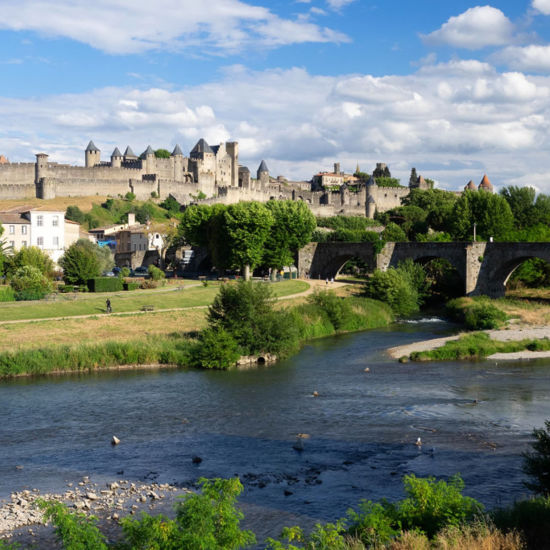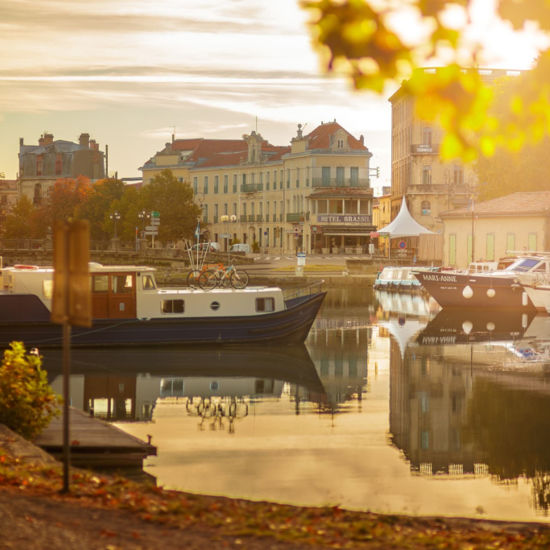
Fresquel aqueduct and locks
The Fresquel site includes Fresquel aqueduct, a lock designed by Pierre-Paul Riquet and another double lock that was built at the same time as the aqueduct. The 135 m canal pound between the two locks is the shortest one on the Canal du Midi.
Fresquel canal aqueduct
Fresquel aqueduct was built between 1802 and 1810 at the same time as the new Canal du Midi route via Carcassonne.

When first built, the canal flowed 5 km north of Carcassonne, following the course of the Fresquel river. The water level was often high at this river, which caused frequent flooding and high maintenance costs at the point where the river and canal crossed paths. Due to the winding course of the river, the high water levels often meant that farming land was flooded and crops were lost.
In 1776, plans to modify Fresquel river were put forward, and it was decided to build an aqueduct so the canal would flow up over the river.
The town of Carcassonne took advantage of this project to bring the canal closer to the town. The plans were accepted in 1786 and construction work began soon after.
The new section of the canal that passed via Carcassonne was inaugurated on 31 May 1810.
This aqueduct allowed the canal to cross the Fresquel river and then join onto the former canal further downstream. This new structure was a bridge with three arches, made from cut stone.
Fresquel aqueduct is 50 m long and 30 m wide, and differs in that it carries both the canal and the road to the Minervois. This road provided a boost to wine and cereal trade in the south of France.

Fresquel locks
Downstream from the aqueduct, two locks complete the Fresquel site. The first one is a double lock (with two chambers), with an intermediate body of water, and then a second single lock a few metres further downstream.
The single lock is on the former canal route and dates from around 1674.
The double lock was built when the canal's alternative route was created, via Carcassonne in 1810.
There is a lock keeper's house next to each lock.





